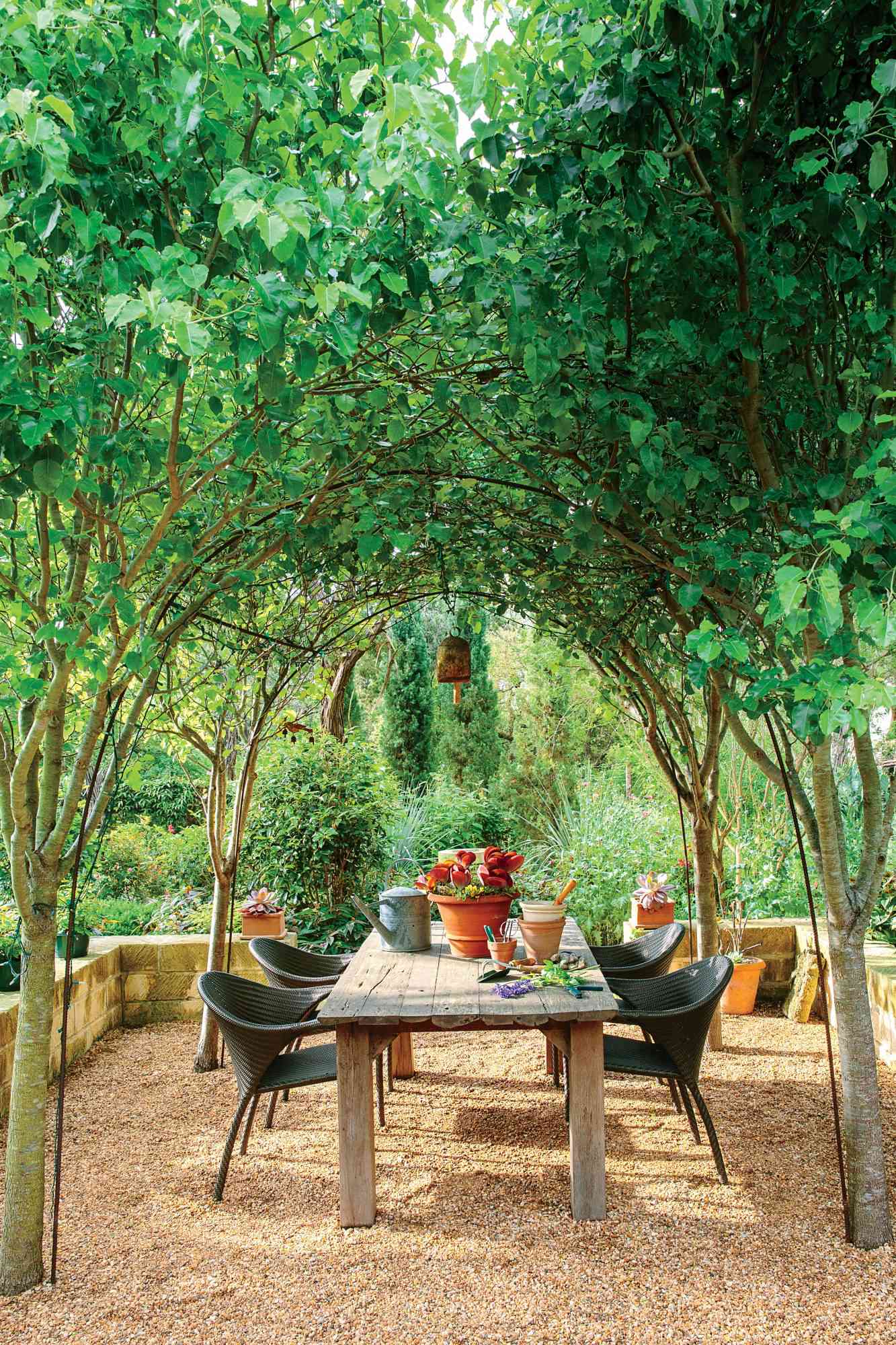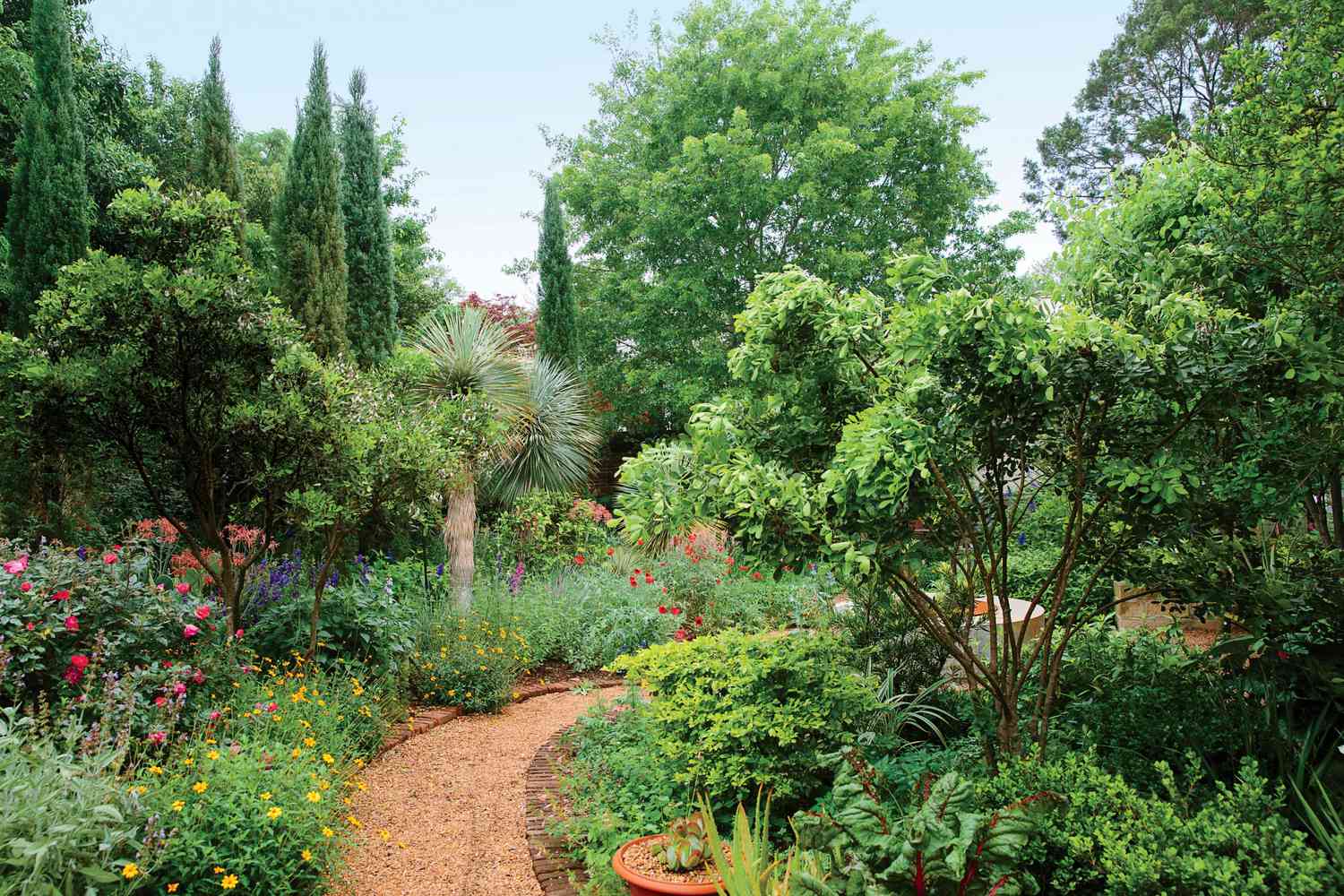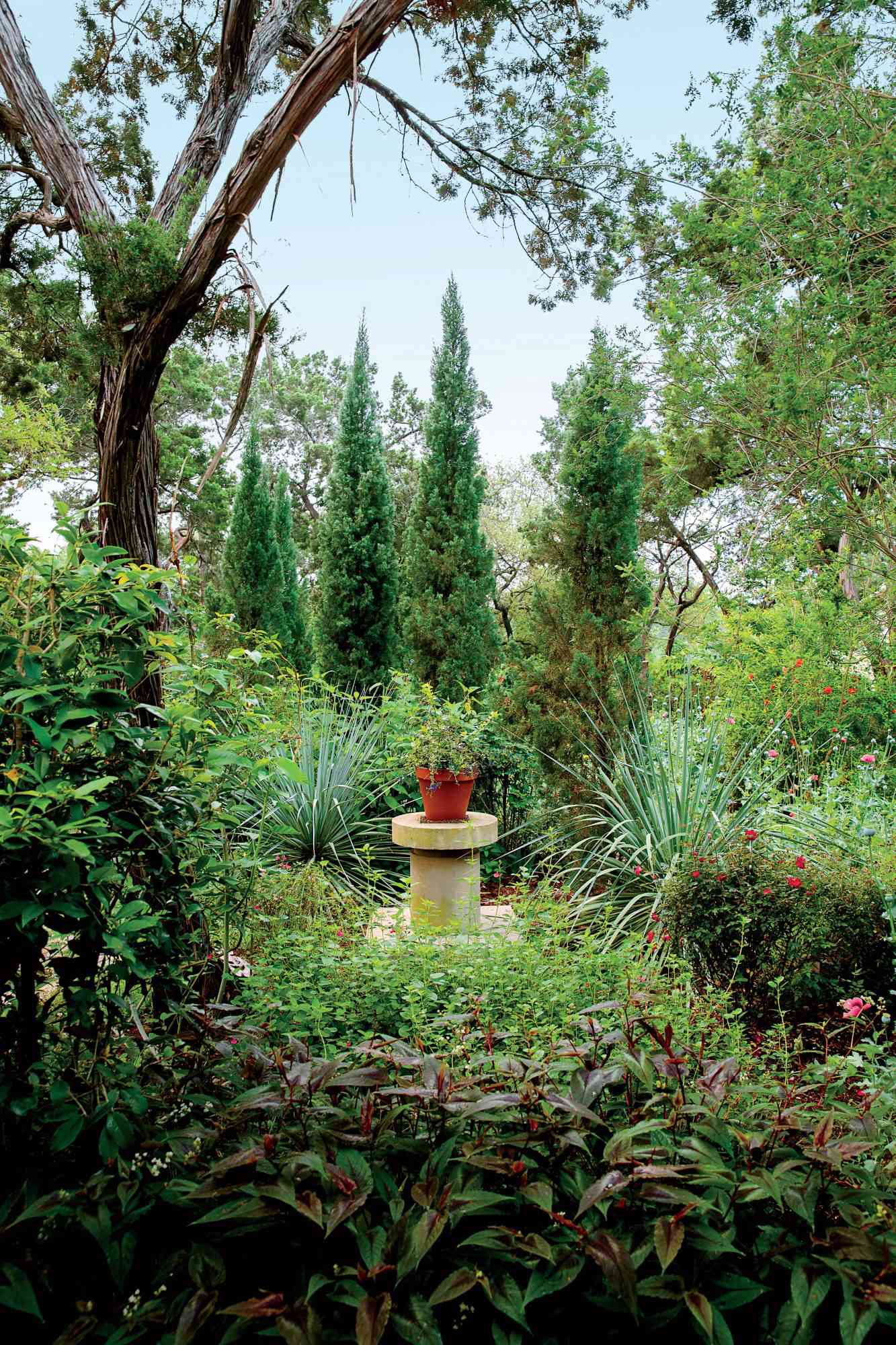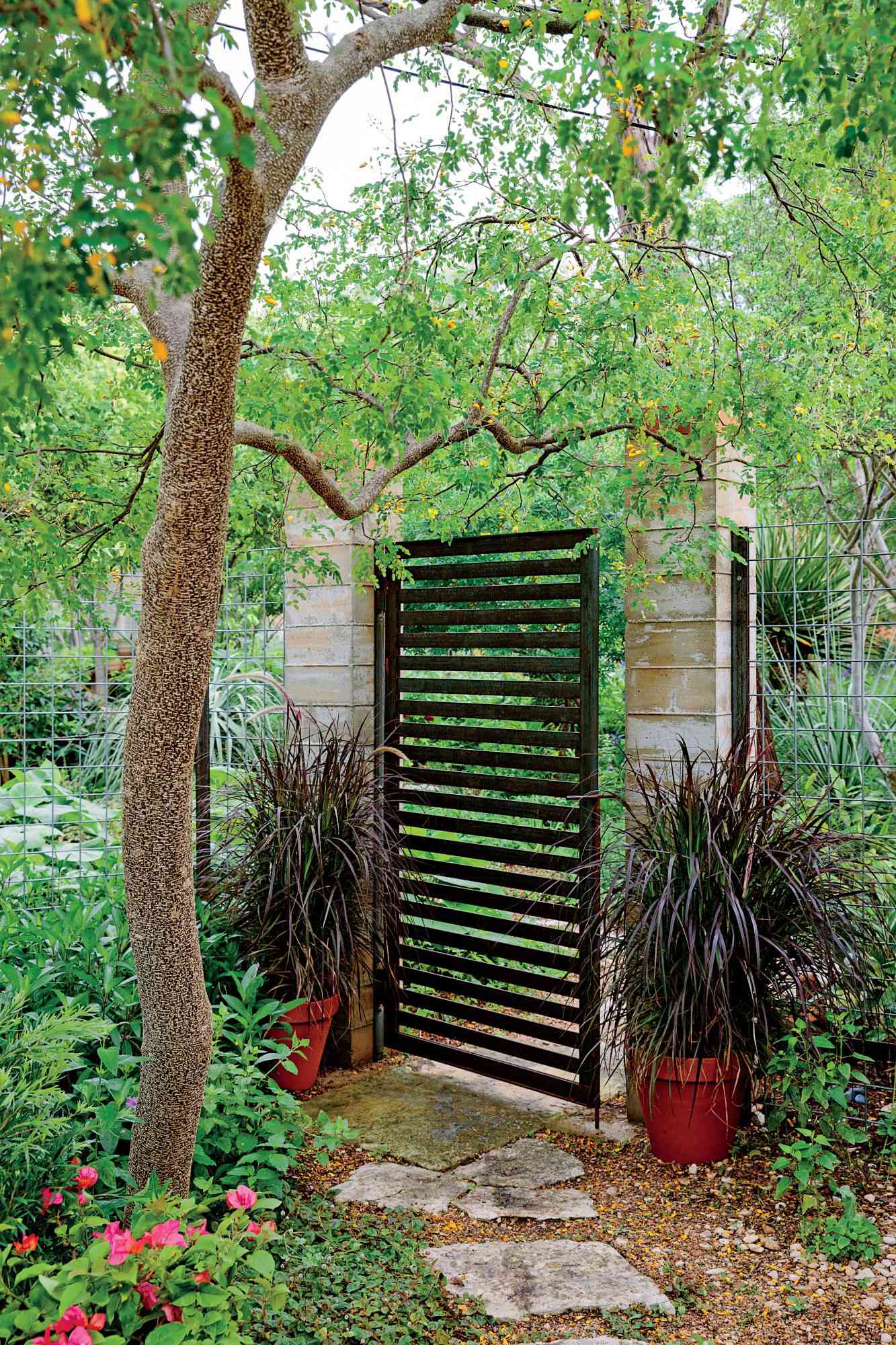In the midst of notoriously arid Austin grows an evergreen escape perfect for wandering. A Texas persimmon towers over the garden, casting shimmering shadows on shade-loving plants below. The heady fragrance of sweet olives drifts down pathways, as does the scent of a 30-foot-tall sweet almond verbena, which has tiny, milky white blooms in spring, each one a perfumer’s dream.The garden belongs to Margie McClurg and her husband, Al, who enjoy this verdant outdoor hideaway year-round. «When you walk into the garden, you are almost transported,» Margie says, «but you do have to work around the climate in Austin, because we have very hot summers here.» The result of that work, though, feels effortless. Paths wind through inspired plantings, and around every corner, there are surprises for the senses. The lush designs, which are interspersed with pops of blooming color, play with texture and scale to bring interest to the landscape throughout the changing seasons.
Do Your Research
The garden underwent a redesign in 2012, which reinvigorated the space with a stunning hardscape filled with thoughtful details. The McClurgs worked with landscape designer Jackson Broussard and the team at Austin-based Sprout, who are well acquainted with nurturing gardens in challenging climates. In this garden Broussard was careful to use only climate-appropriate plants that can withstand Austin’s heat. He chose plantings with different leaf shapes, sizes, and textures to ensure the garden is eye-catching all year long. «This garden needed to have a heart, better plant organization, and purposeful movement to give it structure and a sense of place. I wanted to provide a space that was both beautiful to walk though and a functional extension of the McClurgs» home,» Broussard explains.
Give Your Garden a Central Hub

Broussard and his team designed the hardscape and installed it in sections, carefully developing the structures and textures that make this garden one of a kind. It’s a space for meandering, and all paths lead to the leafy arbor. Broussard explains, «We needed a place for the paths to meet in an organized way. They start and end at the dining area, so it’s a perfect jumping-off point to explore the landscape.» The canopy is composed of four «Bradford» pear trees trained into an arch and woven together; they cast shade over the teak table below. «Coming up with the arbor was pure genius on Jackson’s part, and we enjoy it throughout the seasons,» Margie says.»During the hot Texas summers, deciduous pears provide the benefit of a cool, shady canopy,» Broussard adds. The arbor also provides some of the few seasonal color changes in the garden, as the trees» snowy white spring blooms give way to bright green leaves in summer and fiery red ones in autumn.
Set the Scene

Evergreens thrive here, with different shades, shapes, sizes, and scales forming intricate plant combinations as the garden matures. Over time, the landscape has become a gorgeous patchwork of plantings. «We brought in color with interesting foliage like nolina, prickly pear cactus, and purple smoke trees so the garden doesn’t rely solely on blooms,» Broussard explains. The occasional flowers are juxtaposed with evergreens, which provide both structure and texture. «We added Italian cypress, bluebeard yucca, boxwood, and plum yew as well as man-made elements at strategic viewpoints. Even in winter, the evergreens and architectural elements form a structural backbone for the space,» Broussard says.
The mingling of various elements, both evergreen and otherwise, ensures that the eye is always being drawn somewhere new. Regardless of the time of year—and even in the heat of summer—whether sitting under the leafy arbor, winding along the paths, or glimpsing a vibrant bloom among the layers of evergreen plantings, visitors are transported. As Margie explains, «That’s the delight of this garden; it doesn’t have a bad season.»
Beautiful Blooms

The winding paths meander through the landscape and highlight all the colorful blooms. «We create new movement in the garden each season by varying the flowering plants that border the curved pathways,» Broussard explains. He also recommends planting in masses. «It’s easier to appreciate a grouping of the same type of bloom and foliage than to search for a single flower in a crowd,» Broussard explains.
Place Objects in Nature

«Man-made items thoughtfully mixed with natural plantings can be very powerful. We incorporated pieces with sentimental value at the end of a sight line or as a surprise when rounding a corner,» Broussard says. These additions lend sufficient structure and plenty of personality to the evergreen space.
Add Handcrafted Elements

Adding architectural elements, like this mixed-media gate, lends permanent structure to the ever-changing natural designs of the garden. «We welded the gates, hand-chiseled the faces of the limestone walls, poured the concrete gate columns, and used handmade terra-cotta vessels throughout the garden,» Broussard says. The overall effect is carefully considered, yet gorgeously unruly. Around every corner, there are beauitful, evergreen vignettes and thoughtful, man-made touches. These layers of garden design form the McClurg’s oasis in Austin, a lush garden escape no matter the season.